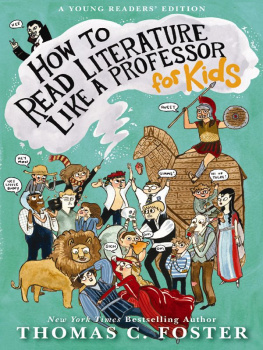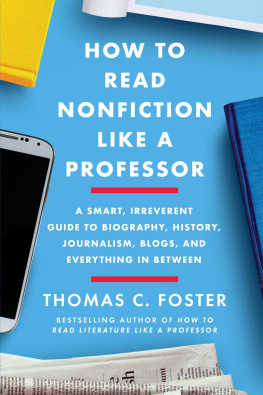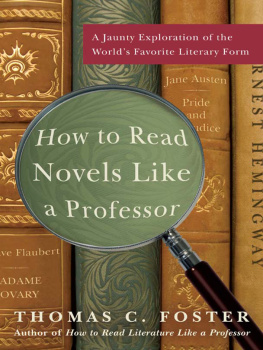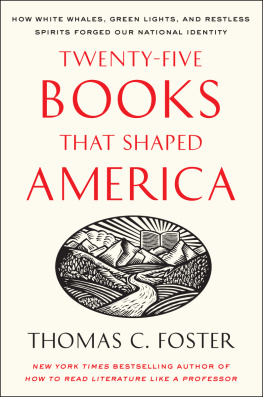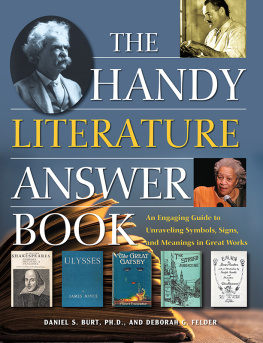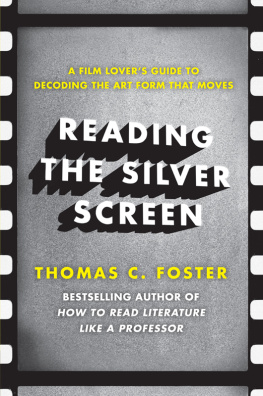Howd He Do That?
M R . L INDNER ? T HAT wimp?
Right. Mr. Lindner, the wimp. So what did you think the devil would look like? If he were red with a tail, horns, and cloven hooves, any fool would know to turn down his offer.
The class and I are discussing Lorraine Hansberrys play A Raisin in the Sun (1959). The confused questions arise when I suggest that Mr. Lindner is the devil.
The Youngers, an African-American family in Chicago, have made a down payment on a house in an all-white neighborhood. Mr. Lindner, a meek little man, has come to visit with a check in hand. He (along with all the neighbors) wants the family to take the check and move right back out again.
At first Walter Lee Younger confidently turns down the offer. He believes that the familys money (a life insurance payment they received after the death of Walters father) is secure. But shortly after sending Mr. Lindner away, he discovers that two-thirds of that money has been stolen. All of a sudden Mr. Lindners insulting offer comes to look like the familys salvation.
Bargains with the devil go a long way back. Most take the form of the Faust legend. In this old story, the devil offers Faust a life of pleasure, riches, and power, in return for his soul. Faust accepts happily, enjoys his good times, and then repents too late as the devil drags his dying soul to hell. Its a story thats retold often. Each time, the hero is offered something he desperately wantspower or knowledge or a fastball that will beat the Yankeesand all he has to give up is his soul.
In Hansberrys version, when Mr. Lindner makes his offer, he doesnt mention Walter Lees soul. He doesnt even know that he is demanding it. He is, though. Walter Lee can be rescued from his familys crisis. All he has to do is to admit that hes not equal to his new white neighbors, that his pride and self-respect, his identity , can be bought.
If thats not selling your soul, what is?
But Walter Lee resists the devils temptation. He looks at himself and at the true cost of the bargain and recovers in time to reject the devilsMr. Lindnersoffer. Walter Lee grows into a hero as he wrestles with his own demons as well as with the one who comes to visit with a check, and he comes through without falling. His soul is still his own.
S OMETHING ALWAYS HAPPENS in this conversation between professor and students. Each of us gets a look on our faces. My look says, What, you dont get it? Theirs says, We dont get it. And we think youre making it up. Basically, weve all read the same story, but we havent used the same tools to analyze it.
It might seem as if the teacher is inventing a way to interpret the story out of thin air. Actually, the teacher just has some more experience. And the teacher has gathered, over the years, a kind of grammar of literature. Thats a certain set of patterns, codes, and rules that we can learn to use when were reading a piece of writing.
Stories and novels have a very large set of conventions, or rules, or things that you can learn to expect: types of characters, plot rhythms, chapter structures, points of view. Poems have a great many conventions of their own. Plays, too. And there are certain conventions that show up in all three. Spring usually means the same thing, whether its mentioned in a poem or a play or a novel. So does snow. So does darkness. So does sleep.
Whenever spring is mentioned, we all start to think of the same ideas: youth, promise, young lambs, children skipping... on and on. And if we keep thinking, we might get to other concepts, like new birth, new life, renewal.
Okay, lets say youre right and there is a set of conventions, like a key to reading literature. How do I get so I can recognize these?
Same way you get to Carnegie Hall. Practice.
When readers first read a piece of fiction, they focus on the story and the characters: who are these people, what are they doing, and what wonderful or terrible things are happening to them? They will respond emotionally, with joy or horror, laughter or tears, anxiety or delight. This is what every author hopes for.
But when an English teacher reads, though he will respond emotionally as well, a lot of his attention will also be fixed on other things. It will be asking other questions. Where did that joy or grief or anxiety come from? Does this character seem like any others Ive read about? Where have I seen this situation before? If you learn to ask these questions, youll read and understand literature in a new light. And it will become even more rewarding and fun.
Every Trip Is a Quest (Except When Its Not)
O KAY, SO HERES the deal: lets say youre reading a book about an average sixteen-year-old kid in the summer of 1968. The kidlets call him Kip Smith, who hopes his acne clears up before he gets draftedis on his way to the A&P to get a loaf of bread. His bike is a one-speed with a coaster brake and therefore very embarrassing to ride, and riding it to run an errand for his mother makes it worse. Along the way he has a couple of disturbing experiences, including an unpleasant encounter with a German shepherd. And its all topped off in the supermarket parking lot when he sees the girl of his dreams, Karen, laughing and fooling around in Tony Vauxhalls brand-new car, a Barracuda.
Now, Kip hates Tony already because hes got a name like Vauxhall and not Smith, and because the Barracuda is bright green and goes approximately the speed of light, and also because Tony has never had to work a day in his life. Karen, who is laughing and having a great time, turns and sees Kip, who asked her out not so long ago. And she keeps laughing.

